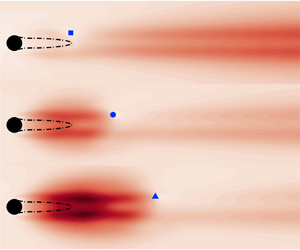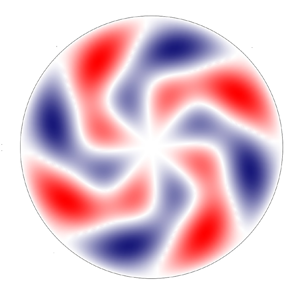Graphical abstract from Yang, R., Ng, C., Chong, K., Verzicco, R. & Lohse, D. 2022 Do increased flow rates in displacement ventilation always lead to better results? J. Fluid Mech. 932, A3. doi:10.1017/jfm.2021.949.
JFM Rapids
Open capillary siphons
-
- Published online by Cambridge University Press:
- 09 December 2021, R1
-
- Article
- Export citation
Focus on Fluids
Getting the ducks in a row
-
- Published online by Cambridge University Press:
- 09 December 2021, F1
-
- Article
-
- You have access
- HTML
- Export citation
JFM Papers
Rheology of mobile sediment beds in laminar shear flow: effects of creep and polydispersity
-
- Published online by Cambridge University Press:
- 06 December 2021, A1
-
- Article
-
- You have access
- Open access
- HTML
- Export citation
Optimal sensor and actuator placement for feedback control of vortex shedding
-
- Published online by Cambridge University Press:
- 02 December 2021, A2
-
- Article
- Export citation
Do increased flow rates in displacement ventilation always lead to better results?
-
- Published online by Cambridge University Press:
- 02 December 2021, A3
-
- Article
-
- You have access
- Open access
- HTML
- Export citation
Tempered fractional LES modeling
-
- Published online by Cambridge University Press:
- 02 December 2021, A4
-
- Article
- Export citation
The fate of continuous input of relatively heavy fluid at the base of a porous medium
-
- Published online by Cambridge University Press:
- 02 December 2021, A5
-
- Article
- Export citation
Compressible potential flows around round bodies: Janzen–Rayleigh expansion inferences
-
- Published online by Cambridge University Press:
- 02 December 2021, A6
-
- Article
-
- You have access
- Open access
- HTML
- Export citation
Explorative gradient method for active drag reduction of the fluidic pinball and slanted Ahmed body
-
- Published online by Cambridge University Press:
- 06 December 2021, A7
-
- Article
-
- You have access
- Open access
- HTML
- Export citation
Interaction of cavitation bubbles with the interface of two immiscible fluids on multiple time scales
-
- Published online by Cambridge University Press:
- 02 December 2021, A8
-
- Article
-
- You have access
- Open access
- HTML
- Export citation
Dynamics and length scales in vertical convection of liquid metals
-
- Published online by Cambridge University Press:
- 02 December 2021, A9
-
- Article
-
- You have access
- Open access
- HTML
- Export citation
Navigation of micro-swimmers in steady flow: the importance of symmetries
-
- Published online by Cambridge University Press:
- 02 December 2021, A10
-
- Article
- Export citation
Marangoni instabilities of drops of different viscosities in stratified liquids
-
- Published online by Cambridge University Press:
- 02 December 2021, A11
-
- Article
-
- You have access
- Open access
- HTML
- Export citation
Linear instability of lid- and pressure-driven flows in channels textured with longitudinal superhydrophobic grooves
-
- Published online by Cambridge University Press:
- 02 December 2021, A12
-
- Article
- Export citation
Laboratory-scale investigation of a periodically forced stratified basin with inclined endwalls
-
- Published online by Cambridge University Press:
- 02 December 2021, A13
-
- Article
- Export citation
Wall shear stress from jetting cavitation bubbles: influence of the stand-off distance and liquid viscosity
-
- Published online by Cambridge University Press:
- 02 December 2021, A14
-
- Article
- Export citation
Computational and experimental study of an oil jet in crossflow: coupling population balance model with multifluid large eddy simulation
-
- Published online by Cambridge University Press:
- 02 December 2021, A15
-
- Article
- Export citation
Growth of vortical disturbances entrained in the entrance region of a circular pipe
-
- Published online by Cambridge University Press:
- 02 December 2021, A16
-
- Article
- Export citation
Non-local dispersion and the reassessment of Richardson's t3-scaling law
-
- Published online by Cambridge University Press:
- 02 December 2021, A17
-
- Article
-
- You have access
- Open access
- HTML
- Export citation
Stochastic models for the droplet motion and evaporation in under-resolved turbulent flows at a large Reynolds number
-
- Published online by Cambridge University Press:
- 03 December 2021, A18
-
- Article
- Export citation




















































































